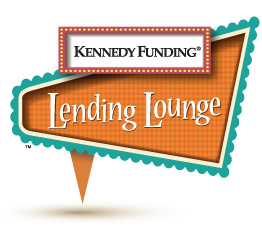
Step inside almost any suburban mall or aging strip center and you’ll likely find the same story: a few national chains hanging on, a shuttered anchor store, and rows of darkened storefronts that once held local tenants. Once the heart of commerce and community, these properties now sit half-empty—reminders of changing consumer habits and a retail landscape that’s evolved faster than the buildings themselves.
But to a seasoned investor or developer, these aren’t dead spaces. They’re blank canvases.
Across the country, adaptive reuse is breathing new life into distressed retail real estate. Think medical offices where a big-box store used to be. Logistics hubs taking over former department stores. Churches, schools, call centers, coworking spaces—today’s demand is no longer about foot traffic and food courts. It’s about flexibility, infrastructure, and reimagining what’s possible.
The Vision Is There—But Is the Financing?
While the upside of retail repurposing is clear, financing these transformations isn’t always so simple. Traditional lenders often view these properties as too speculative. The current cash flow is weak or nonexistent, tenants have long since left, and the end-use doesn’t resemble the original purpose.
That’s a problem for banks—but not for private lenders.
This is where hard money, or private bridge loans, step in as a vital tool. For developers ready to act, these loans provide the capital—and the speed—needed to turn a distressed asset into a productive, income-generating property.
The Flexibility to Fund Creative Redevelopment
What makes hard money ideal for adaptive reuse is its responsiveness to real-world complexity. Traditional financing tends to rely on historical data, stabilized income, and conservative underwriting. Private lenders, on the other hand, assess potential.
If you’ve got a plan to convert a former retail space into, say, a behavioral health clinic, and you’re waiting on permitting or build-out—hard money can bridge that gap. Need to secure the property fast? A private loan can close in days. Looking to show early leasing activity before refinancing with permanent debt? Bridge funding gives you that runway.
Where banks require everything to be perfectly in place, hard money meets you where your project is—and helps get it where it needs to go.
A Real-World Shift, Funded in Real Time
Let’s say you’ve identified a 70,000-square-foot former supermarket in a growing suburban market. The site has excellent parking, highway access, and is minutes from several hospitals and residential neighborhoods. Your vision: convert the space into a medical office and wellness complex—complete with urgent care, outpatient diagnostics, and therapy services.
The seller wants a fast close, and construction will take six to nine months. Traditional lenders won’t commit without tenants in place.
A short-term private loan offers a simple path forward: fund the acquisition, kick off the interior demolition and reconfiguration, and give you the time to finalize tenant commitments. Once leases are in hand and the space is built out, you’re in a strong position to refinance with long-term debt or sell at a higher valuation.
Reviving the Past, Building the Future
Adaptive reuse isn’t just a buzzword—it’s a proven strategy for turning obsolete retail into income-producing property that meets today’s market needs. But success depends on timing. The right property at the right price won’t stay available for long, and financing delays can kill momentum before it starts.
At Kennedy Funding, we specialize in helping borrowers take bold ideas and move fast. If you see an opportunity in retail’s second act, we’ll help you fund it—before someone else does.







